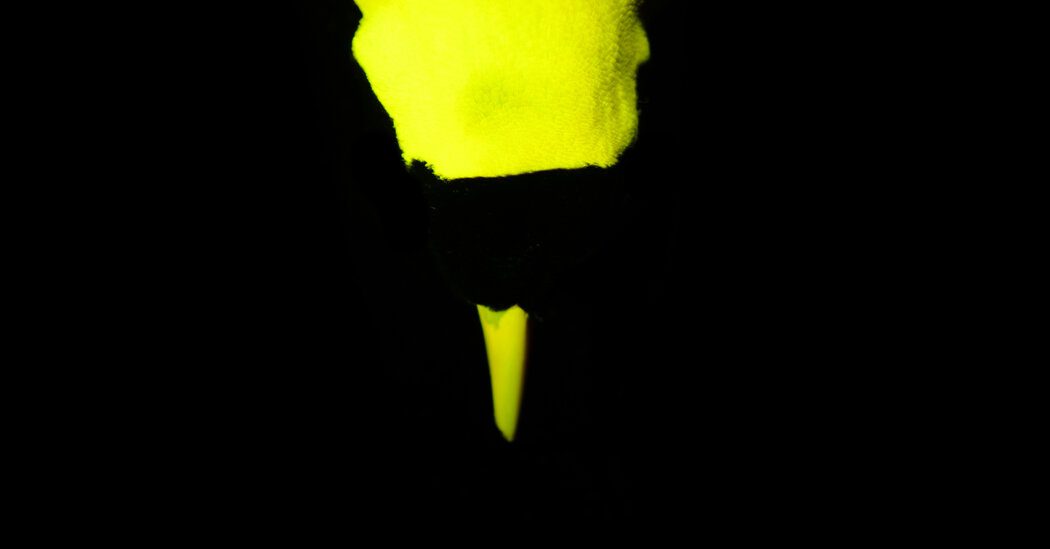
With intricate displays, vibrant plumage, and eye-catching movements on a pristine forest floor, male birds-of-paradise exhibit a range of captivating behaviors to attract potential mates.
Recent research conducted on preserved specimens at the American Museum of Natural History in New York has unveiled a potential new aspect of these tropical birds’ allure — a visual phenomenon called photoluminescence.
Often referred to as biofluorescence when observed in living organisms, this intriguing effect occurs when an object captures high-energy light and re-emits it as lower-energy wavelengths.
Biofluorescence has been documented in numerous species, including fish, amphibians, and even mammals like bats and wombats.
It’s noteworthy that birds have been largely overlooked in studies concerning optical phenomena. Until now, the potential for glowing properties in birds-of-paradise — renowned for their extravagant courtship rituals — had not been investigated. These fascinating birds are primarily found in Australia, Indonesia, and New Guinea, where their striking displays are well known.
A recent study published in Royal Society Open Science revealed that researchers examining specimens at the American Museum of Natural History discovered biofluorescence in 37 out of 45 species of birds-of-paradise.









